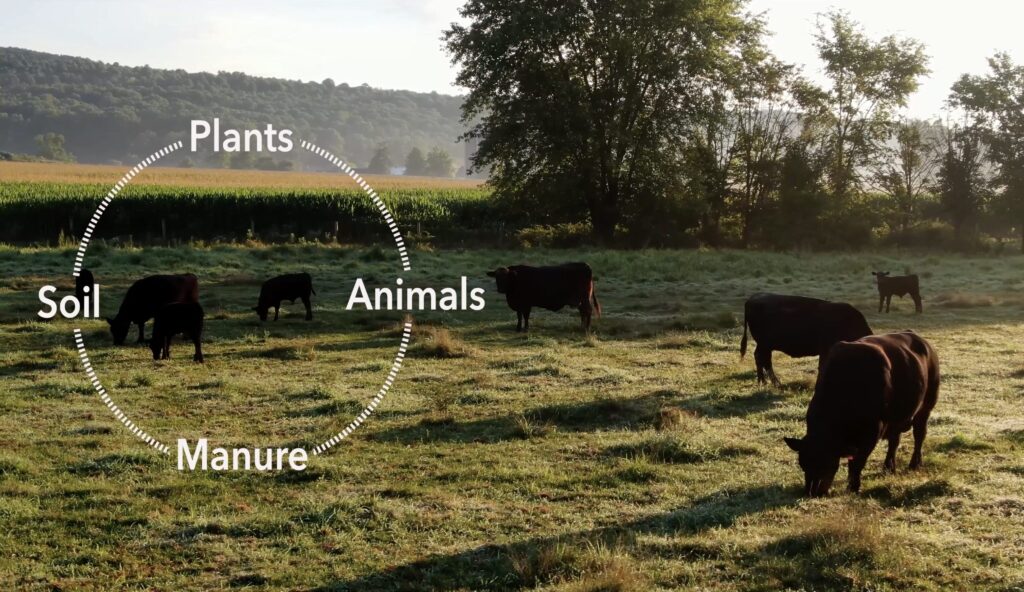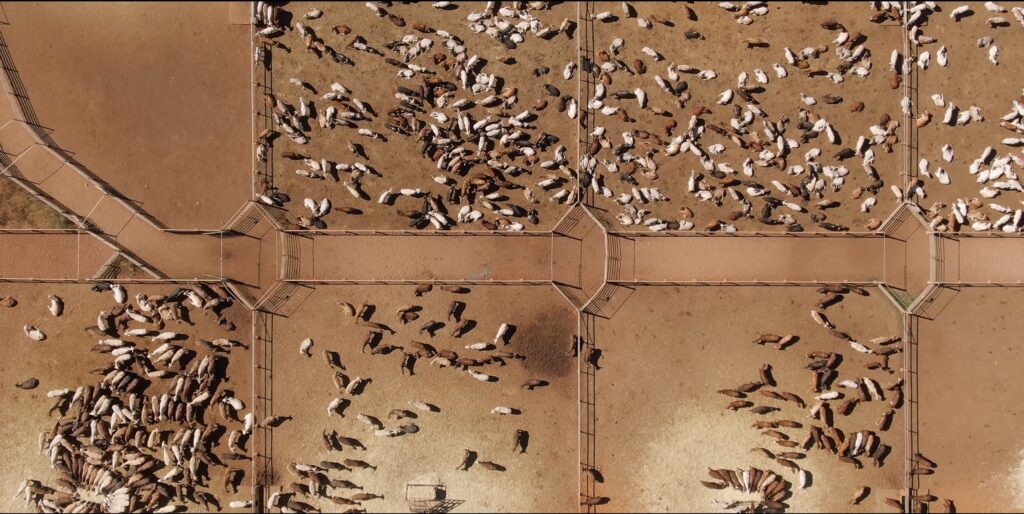Regenerative Agriculture: Big Meat & Dairy’s Get-Out-of-Jail-Free Card?
5 Mins Read
As climate disasters intensify, Big Meat and Dairy are ramping up efforts to divert attention from their major role in climate change.
Agriculture stands as the largest source of methane emissions – a potent greenhouse gas that traps heat over 80 times more effectively than CO2 in the short term. With methane driving nearly 45% of recent global warming, action is urgently needed to rein in these emissions and mitigate the impacts of climate change. Yet instead of mitigating these emissions, Big Meat and Dairy are doubling down on the greenwashing. Its latest distraction: regenerative agriculture.
‘Regenerative’ is the latest buzzword being used to mislead consumers and policymakers into thinking they can keep eating meat at current levels instead of adopting a plant-rich diet, which climate scientists recommend. Under the guise of regenerative agriculture, the industry is presenting itself as part of the solution, using a façade of eco-friendliness to downplay the urgent need to address its environmental impact and avoid necessary food system transformations.
Why is regenerative agriculture Big Meat and Dairy’s new buzzword?

Regenerative agriculture emerged as an ambitious movement promoting sustainable, organic farming through the Regenerative Organic Certified (ROC) standard, offering the promise of enhancing biodiversity and improving soil health. However, the lack of clear and globally recognised legal standards has seen major meat and dairy corporations co-opt the term to greenwash harmful practices.
Big Meat and Dairy are focusing primarily on natural carbon sequestration, which is increasingly unreliable. Companies use small changes to portray the entire supply chain as beneficial for the planet, despite new research in 2023 indicating that land’s ability to absorb carbon has significantly declined – revealing that forests, plants, and soil are currently absorbing almost no carbon. Techniques like no-till farming and crop rotation are employed superficially, often omitting essential organic principles.
In today’s climate-conscious world, this narrative resonates with the public, regulators, and investors. Regenerative agriculture has garnered significant investments, allowing corporations to exploit the concept, reap the benefits, and pose as sustainability leaders while continuing with business as usual.
Jumping on the regenerative agriculture bandwagon

Big Meat and Dairy are promoting regenerative agriculture as a silver bullet for climate action despite its limited ability to mitigate the environmental damage caused by industrial animal farming. Major players like Nestlé, Danone, Arla, and Cargill have eagerly embraced this narrative, seizing every opportunity to promote it. A recent study found that 24 out of 30 companies analysed feature ‘regenerative agriculture’ in their sustainability messaging, while a broader review of 79 global agri-food companies revealed that 63% see it as a key emissions reduction strategy.
In 2023, our review of Nestlé’s climate roadmap found that its over-reliance on regenerative agriculture fails to align with UN net-zero guidance and is unlikely to meet necessary scientific targets. While these actions may offer some benefits, without sufficient funding or clear targets and reporting – including on methane emissions – they do not form a robust climate plan.
Nestlé’s greenwashing has been noticed by others too: organisations like NCI, BiteBack 2030, and Planet Tracker have called out the company for lacking a robust plan to meet its net-zero commitments. With Nestlé being one of the largest dairy processors globally (dairy production forms 37% of the company’s emissions, primarily methane produced by cattle) its light touch approach raises serious concerns about its genuine commitment to tackling climate change. The emphasis on ad-hoc changes like utilising manure for fertiliser or shifting pasture management mean regenerative agriculture is more a smokescreen than a solution.
More recently, at New York Climate Week 2024, this greenwashing hit a new high, as ‘REGEN House,’ saw General Mills, Danone and others push regenerative agriculture as the core of their climate strategies.
Nestlé, always eager to flaunt its regenerative agriculture credentials, used high-profile panels at NYCW to pitch these initiatives as climate solutions. It recently announced a $1.2 billion investment in regenerative agriculture — but only for its coffee, leaving its meat and dairy sectors untouched and without any substantial funds or targets.
This distraction misses the core issue: real climate action requires fewer farmed animals. Without addressing emissions from its most polluting sector, dairy, this appears to be nothing more than an attempt to divert attention from its actual impact.
The science doesn’t add up

Research suggests that the promotion of “regenerative grazing” as a climate solution is fundamentally deceptive: One study highlights the unrealistic expectation of sequestering 135 billion tonnes of carbon annually, while another indicates that switching to grass-fed beef (a core regenerative agriculture principle) could actually increase methane emissions by 43%.
This latest buzzword obscures the true impact of the ongoing expansion of intensive animal farming, which generates more greenhouse gas emissions than well-managed grazing can offset.
As we near COP29 where regenerative agriculture will likely take centre stage, with REGEN House making another appearance, we must remain alert to its limitations and the corporations ready to capitalise on its greenwashing potential.
Companies like Nestlé are banking on regenerative agriculture to perpetuate business-as-usual, presenting this narrative as a quick fix to the climate crisis. The stark reality is that the meat and dairy industry must prioritise reducing methane emissions and set actionable targets in line with science, aiming for at least a 30% reduction by 2030.
Regenerative agriculture is the latest in a long line of misleading narratives used to delay climate action. We cannot let this narrative win at this critical stage in the climate emergency.




